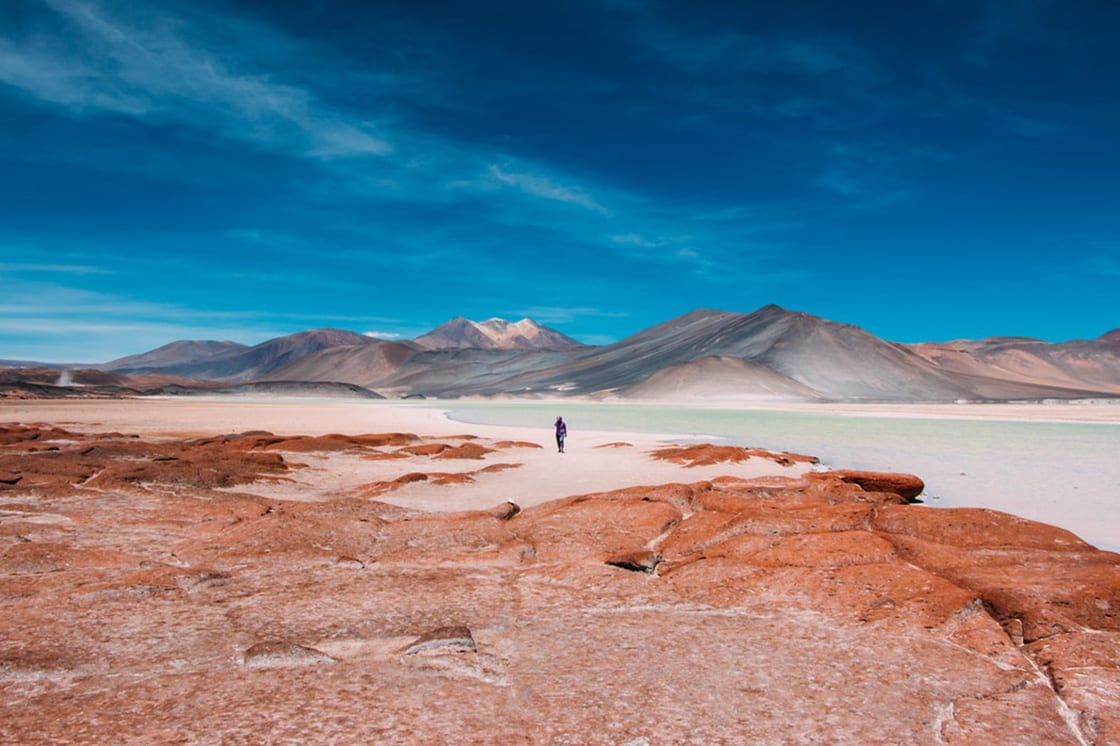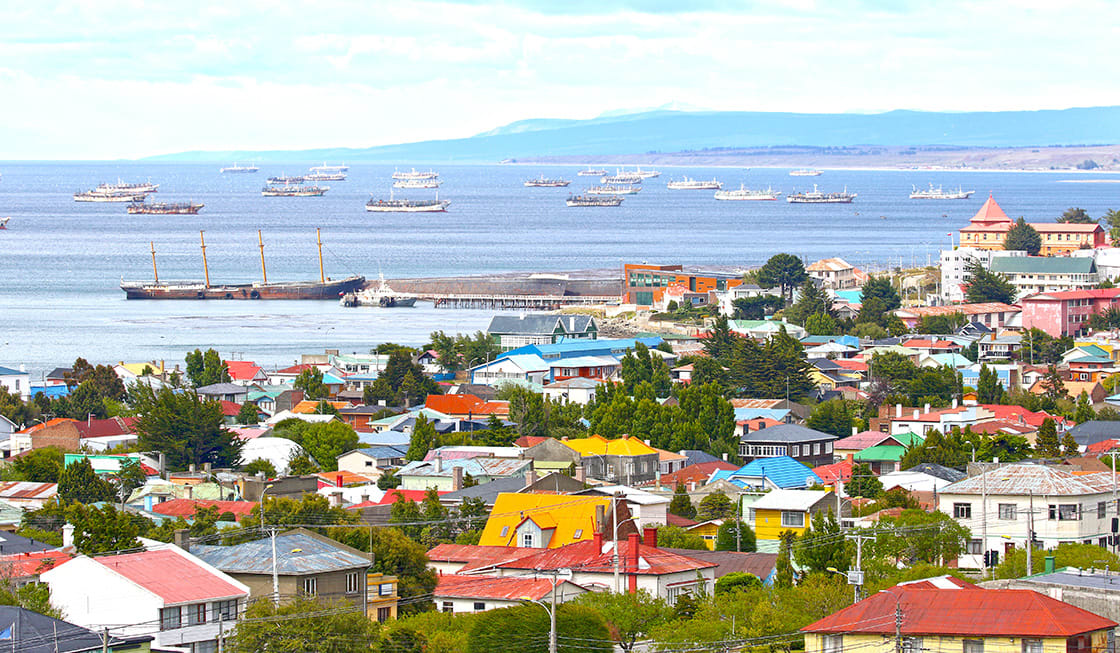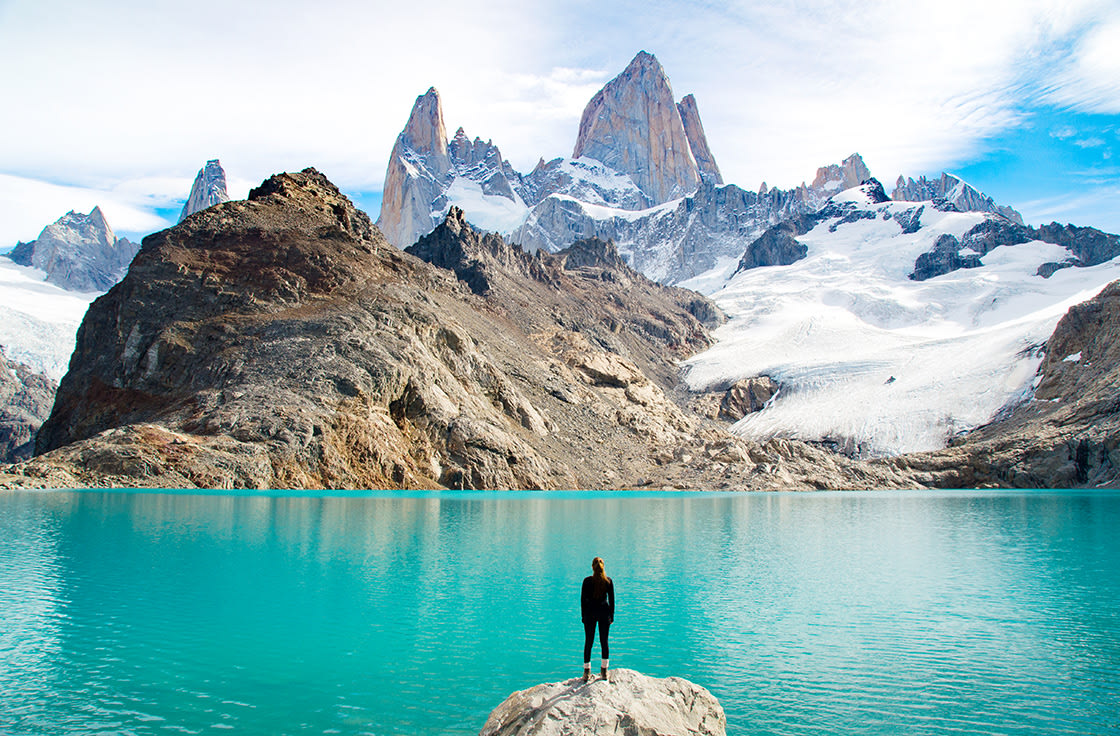
The weather varies greatly throughout Chile due to its geography, its extreme range of altitudes, and its skinny elongated shape, which stretches 2,653 miles north to south. It is, after all, the longest country in the world and it’s narrow − only 110 miles across − because of the Andes Mountains, which separate it from Argentina. Therefore, the best time to visit Chile depends on the region you’re traveling to. Summer brings some of the most enjoyable weather of the year.
Expect warm temperatures in Patagonia, but watch out for windy days. Coastal cities, like Valparaiso, will experience warm, Mediterranean-like weather during these months. April’s displays of fall colors in Chile’s Winelands make this month an appealing time for a visit, Santiago, the Central Valleys, and the Atacama Desert are truly year-round destinations. The ski resorts around Santiago and Patagonia open from June for winter activities, and the wettest month throughout the country is in July. Spring and fall bring mild weather to the central and northern regions of the country but will come late, in November, to Patagonia. Read on to find out when is the best time to visit Chile.

The Atacama Desert covers 1,600 km strip of land on the Pacific coast, west of the Andes Mountains
If you come at the beginning of September, you can get huge discounts at ski resorts. Patagonia will still be in winter, while the rest of the country begins to transition into spring, which is gorgeous. Every few years the Atacama Desert has stunning desert wildflowers in September, especially in Parque Nacional Llanos de Challe. Santiago becomes sunny, and on the coast, surfers return to ride the waves. While weather is temperate with daytime highs in the 50s, as the season continues you’ll need plenty of warm clothing.
Biting winds and the occasional overcast sky can make it awfully chilly. If you can handle the cool temperatures, you’ll beat the high prices of the peak summer months. October is the height of the shoulder season, and prices for accommodation continue to stay low. The northern and central regions have little rain, lots of sunshine, and continual flowers. See the penguins in Patagonia and experience the vibrancy of Santiago before the summer crowds hit. November is a great time to visit popular places like Tierra del Fuego or travel along the Carretera Austral.
Feast on asado, dance the cueca, and watch rodeo feats during Independence Day (Fiestas Patrias), celebrated during the week of September 18th. Expect oompah bands and lots of German attire at the Oktoberfest in Puerto Varas, Valdivia, and Malloco.

Scenic View Of Punta Arenas
With dazzling vantage points from almost every angle—emerald lakes below and blue glaciers above, Patagonia summers are glorious. During this delightful season, daily highs rest in the 50s, making this an ideal time to visit Punta Arenas and Puerto Natales, Santiago, and the north. December is a good time for outdoor activities throughout the country such as hiking, glacier viewing, and wildlife spotting. Come earlier in the month to avoid the beginning of the high season. The peak season months are January and February and these summer months experience the lowest pollution levels of the year.
Celebrate the New Year by wearing yellow underwear for good fortune, lugging an empty suitcase around the block for travel blessings, and eating 12 grapes as the clock strikes midnight. The city of Arica hosts the Carnaval Andino con la Fuerza del Sol in January or February and mixes Catholic and native traditions. Dance teams take to the streets, each sporting their own distinctive costumes.
In February, head to Easter Island for the Tapati Festival presenting two weeks of traditional body painting, canoe racing, banana tree tobogganing, swimming, and more.

Easter Island is a remote volcanic island in Polynesia. Its native name is Rapa Nui
In March, the high season tapers off in Patagonia and Easter Island, but the weather is still sunny, warm, and comfortable for exploration. Temperatures get a bit cooler on the coast, around 54 − 70°F but Valparaiso still has seven hours of sunshine a day and far fewer crowds than in the summer. If you don’t mind cooler temperatures, this can be a pleasant time to visit. Winds are not as strong as they are in the spring, and both hotel rates and summer visitors begin to diminish. If you’re a wine lover, you should head to the Lake District for the grape harvest, which has even more sunshine than on the coast and stunning fall leaves.
By April, up north, the Atacama Desert cools slightly, and the camanchaca (fog and low clouds) begin to roll across its plains. Go to any wine region for a taste of the Vendimias, Grape Harvest Festival. Watch a grape blessing, and sample some of Chile’s most famous exports. Each wine region will have local celebrations, but to guarantee good reds, go to the Colchagua Valley. Meanwhile, the Curico Valley is the place to go for a crisp Sauvignon Blanc.
Go to coastal towns on May 21st to watch the many small boats, which take to the water while their passengers throw flowers overboard, commemorating the Día de las Glorias Navales (Navy Day).

Fitz Roy Mountain In Patagonia
With the Andes capped in snow, Chile’s winter season draws skiers and snowboarders eager to hit the slopes near Santiago, as well as further south in the Lake District and the whole of Patagonia. However, many of the top attractions close in the winter, temperatures drop to the 30s and 40s, and hotel rooms are hard to come by. In July, you can expect rain in Valparaiso, but lots of splendid snow in Portillo and Valle Nevado. Patagonia has only seven hours of daylight, while Santiago’s temps will range from 39 − 59°F.
For the best powder in Patagonian ski resorts, visit during August. Crowds lessen, prices drop, days get longer, and the rain begins to decrease. Cold days and more hours of sunshine also create the perfect conditions for soaking in the hot springs of Termas de Chillán. Throughout the country, Mapuches celebrate their own New Year’s on the winter solstice in late June. Communities gather to perform rituals, dance, tell stories, and play folk music. The city of Temuco has one of the largest celebrations.
Part carnival, food fair, and “dance of the devils”, the Fiesta de La Tirana takes place on July 16th in honor of the Virgen del Carme, mixing native religions and Catholicism for one of the largest religious festivals in the country.
The Chilean Fjords of Tierra del Fuego, which are the southernmost glaciated inlets in the world, cradled in the remote southern tip of Patagonia, are a spectacular sight to be seen, revealing the extraordinary splendor of nature. The fiords are best visited during the southern hemisphere’s spring and autumn months, which fall from September-November and March-April respectively. Drastic climate change is a daily occurrence this far south, so you should always expect some harsh temperatures no matter what time of year you visit the Chilean Fjords.
While Rainforest Cruises aim to provide accurate and up-to-date information, we make no representations as to the accuracy or completeness of any information herein or found by following any link on this site. Rainforest Cruises cannot and will not accept responsibility for any omissions or inaccuracies, or for any consequences arising therefrom, including any losses, injuries, or damages resulting from the display or use of this information.




